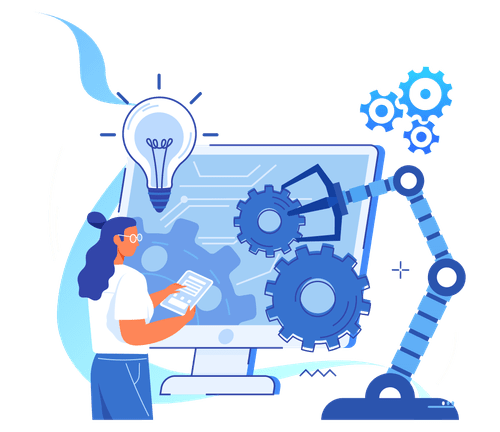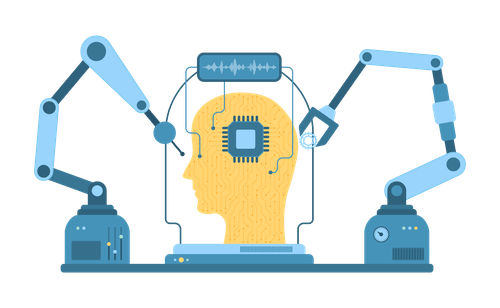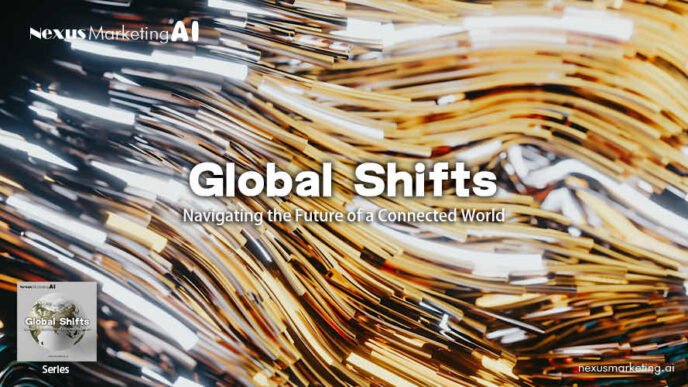Discover how AI-driven Decision Automation is reshaping business and trade with greater speed, accuracy, and efficiency.
Table of Contents

Prefer to listen? Enjoy the audio version of this article
Curated audio version | Audio powered by AI

This technology leverages artificial intelligence (AI), machine learning, and data analytics to automate routine business decisions, enabling companies to operate with unprecedented speed, accuracy, and efficiency.
From optimizing supply chain management to enhancing customer interactions, decision automation is reshaping the way businesses navigate complex trade environments. By automating repetitive and data-driven tasks, companies can minimize human error, reduce operational costs, and focus on more strategic, high-level decision-making. In industries such as trade, finance, and logistics, decision automation is proving to be a critical tool in staying competitive and adaptive in the digital age.
This article explores the key technologies behind decision automation, its applications in various business sectors—particularly in trade and supply chain management—and the challenges and future potential of this evolving technology.
Introduction to Decision Automation

nderstanding Decision Automation
Decision automation uses AI, machine learning, and data analytics to automate routine business decisions. It plays a critical role in digital transformation by enabling businesses to operate with greater efficiency, accuracy, and speed. By automating repetitive tasks, decision automation minimizes human error and reduces costs while allowing companies to focus on strategic decision-making.

Historical Context: From Manual Decisions to AI-Driven Automation
In earlier times, decision-making in business was a manual process, reliant on human intuition and limited data. The introduction of computers in the mid-20th century allowed businesses to adopt data-driven approaches through systems like Management Information Systems (MIS) and Enterprise Resource Planning (ERP).
The 21st century saw the rise of AI and machine learning, transforming decision-making processes further. Automation tools today can analyze large datasets in real-time, providing predictive insights and recommendations. This evolution from manual processes to AI-driven automation marks one of the most significant shifts in business operations and trade.
Key Technologies Driving Decision Automation in Business

Artificial Intelligence and Machine Learning
AI and machine learning (ML) algorithms analyze vast amounts of data, identifying patterns and trends. These technologies provide predictive analytics, enabling businesses to make informed decisions based on historical data. This results in improved operational efficiency and competitive advantage.

Robotic Process Automation (RPA)
Robotic Process Automation (RPA) automates repetitive decision-making tasks such as data entry. RPA software mimics human interactions with systems, enhancing efficiency by allowing employees to focus on higher-value tasks. RPA complements AI and ML by handling routine tasks that support more strategic decision-making processes.

Data Analytics and Big Data
Data analytics powers decision automation by providing real-time insights. Through predictive analytics, businesses can forecast future outcomes and respond quickly to changes in market conditions, customer preferences, or operational challenges. This enhances decision-making efficiency, especially in complex and fast-paced business environments.
Decision Automation in Global Trade

Enhancing Trade Operations
Decision automation enhances logistics, customs clearance, and global supply chain management by minimizing manual intervention and errors. By leveraging AI, machine learning, and data analytics, businesses can operate with increased speed and accuracy, leading to more efficient trade operations.

Intelligent Trading Platforms: AI-Powered Solutions for Global Commerce
AI-powered trading platforms automatically match buyers with sellers, optimize pricing strategies, and predict market trends. These platforms analyze customer behavior, market fluctuations, and supply chain dynamics in real time, enhancing trade efficiency. AI platforms are also improving negotiations and trade agreements, reducing manual intervention and streamlining processes.
Optimizing Supply Chains with Decision Automation

Predictive Supply Chain Management
Decision automation enables businesses to predict and mitigate supply chain disruptions, optimize inventory levels, and streamline shipping routes. Using AI and machine learning, companies can analyze data to anticipate and respond to potential disruptions, leading to improved supply chain efficiency.

Reducing Human Error in Supply Chains
Automating critical supply chain decisions reduces errors and improves speed. By leveraging AI and data analytics, businesses can optimize processes like customs clearance and inventory management, enhancing the efficiency of cross-border trade.
AI-Driven Decision Automation: Benefits and Challenges

Benefits
AI-powered platforms enhance global trade by reducing costs, improving efficiency, and speeding up decision-making. Businesses can automate routine tasks, reducing manual intervention and errors, while gaining valuable insights from data analytics for better operational decisions.
Challenges
Challenges include ethical concerns about workforce displacement, over-reliance on automation, and data privacy issues. Balancing automation with human oversight and ensuring strong data security protocols is essential for responsible use of decision automation technologies.
Future of Decision Automation in Trade and Business

Autonomous Supply Chains
AI is expected to drive fully autonomous supply chains with minimal human intervention. This automation will optimize inventory, logistics, and demand forecasting, leading to more efficient and cost-effective supply chains.
Integration with Emerging Technologies
Integrating decision automation with blockchain, IoT, and quantum computing could further transform global commerce. Blockchain will enhance supply chain transparency, IoT will provide real-time data monitoring, and quantum computing will enable faster and more accurate decision-making.
Conclusion
Decision automation is revolutionizing business and trade by enhancing operational efficiency and reducing errors. As AI and automation technologies continue to evolve, businesses must remain adaptable to harness the benefits of decision automation, ensuring they stay competitive in the fast-changing digital landscape.
FAQs
-
What is decision automation, and how does it differ from traditional decision-making?
Decision automation uses advanced technologies like artificial intelligence (AI), machine learning, and data analytics to automatically make decisions based on pre-programmed rules or algorithms. Unlike traditional decision-making, which relies on human judgment, decision automation processes vast amounts of data quickly, providing faster, more consistent, and data-driven outcomes.
-
How is decision automation used in supply chain management?
In supply chains, decision automation helps predict demand, manage inventory, and optimize shipping routes. AI-driven tools analyze real-time data to anticipate supply chain disruptions and automatically adjust orders, ensuring products are delivered more efficiently and on time.
-
What are the benefits of decision automation for businesses?
The primary benefits include reduced human error, faster decision-making, lower operational costs, and improved efficiency. Automation also allows businesses to make data-driven decisions, leading to more accurate predictions and better resource allocation.
-
Can decision automation be applied to small businesses, or is it only for large enterprises?
Decision automation is scalable and can be applied by businesses of all sizes. While large enterprises often adopt these technologies first, small businesses can leverage cloud-based decision automation tools that offer affordable solutions to optimize their operations.
-
What challenges do businesses face when implementing decision automation?
Some of the challenges include integrating automation systems with existing infrastructure, ensuring data security, addressing ethical concerns, and managing the potential loss of jobs due to automation. Companies must also deal with the complexity of setting up AI-driven models and ensuring they align with business goals.
-
How does decision automation improve international trade?
In global trade, decision automation facilitates faster, more accurate transactions, optimizes pricing, and predicts market trends. AI-powered trading platforms can automatically match buyers and sellers, reducing delays and errors, and making cross-border commerce more efficient.
-
Will decision automation replace human workers?
Decision automation is designed to complement human workers by taking over repetitive, data-driven tasks. While it may reduce the need for certain roles, it also creates opportunities for new jobs focused on managing, overseeing, and refining automation processes.












